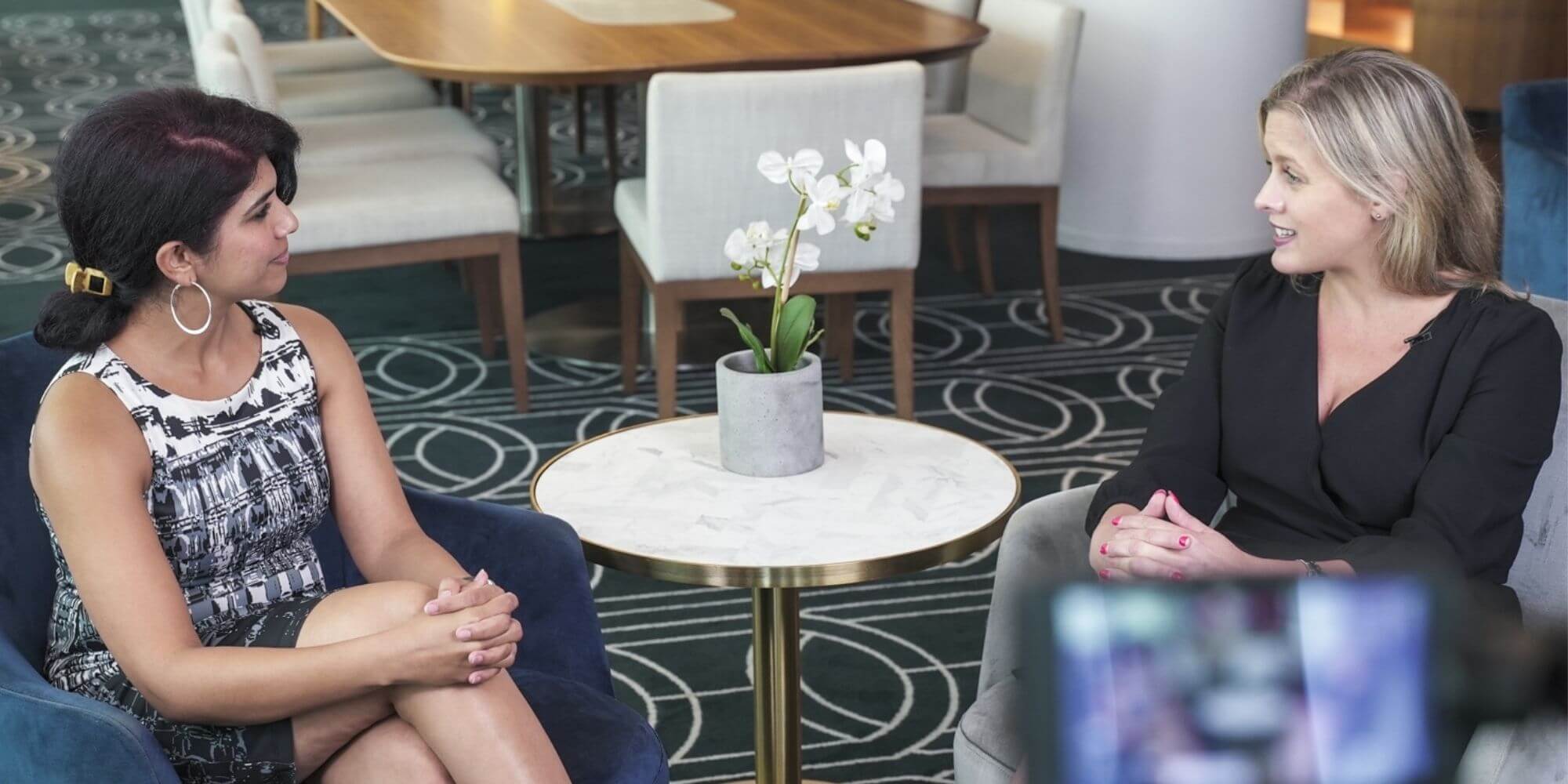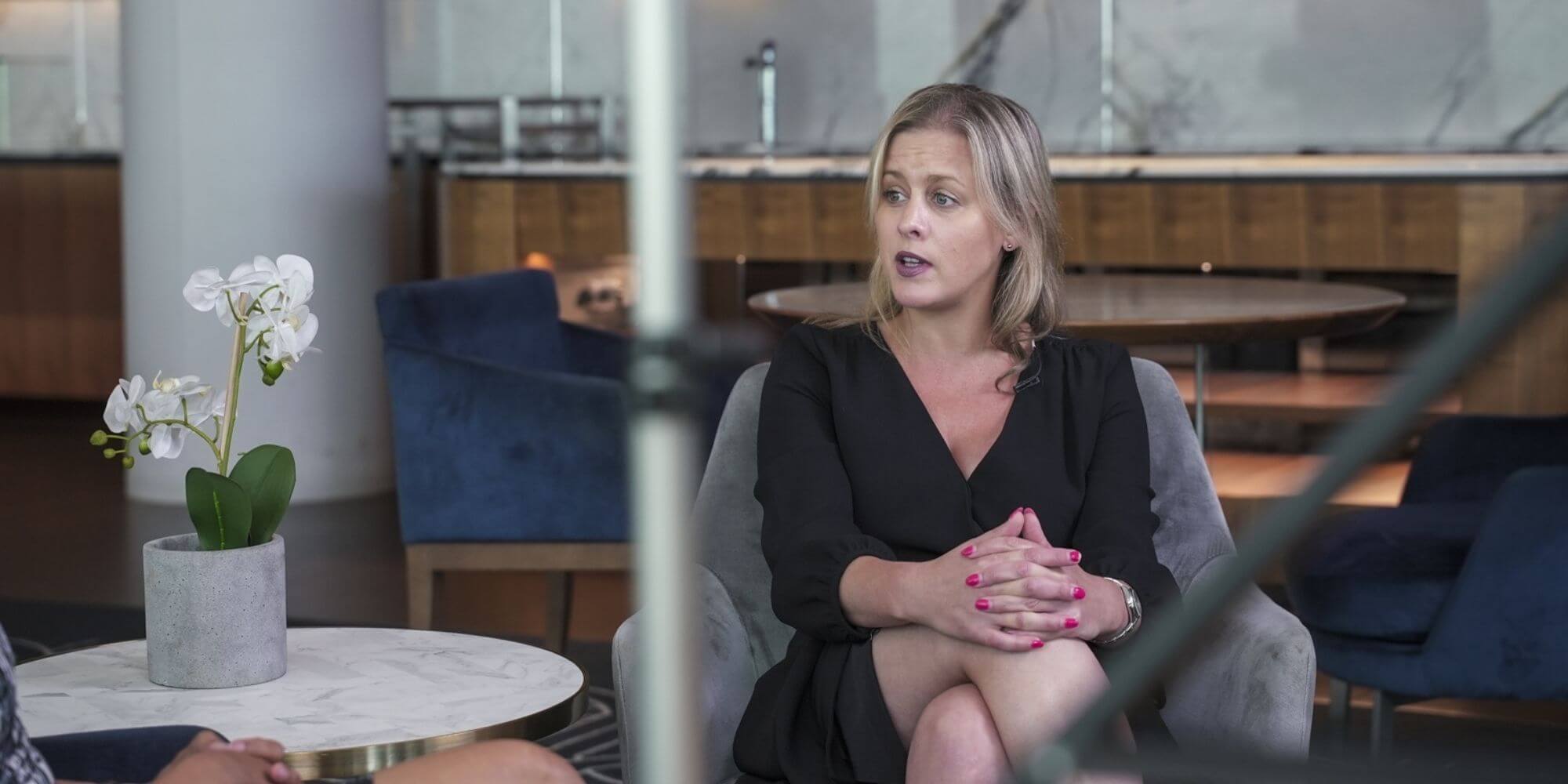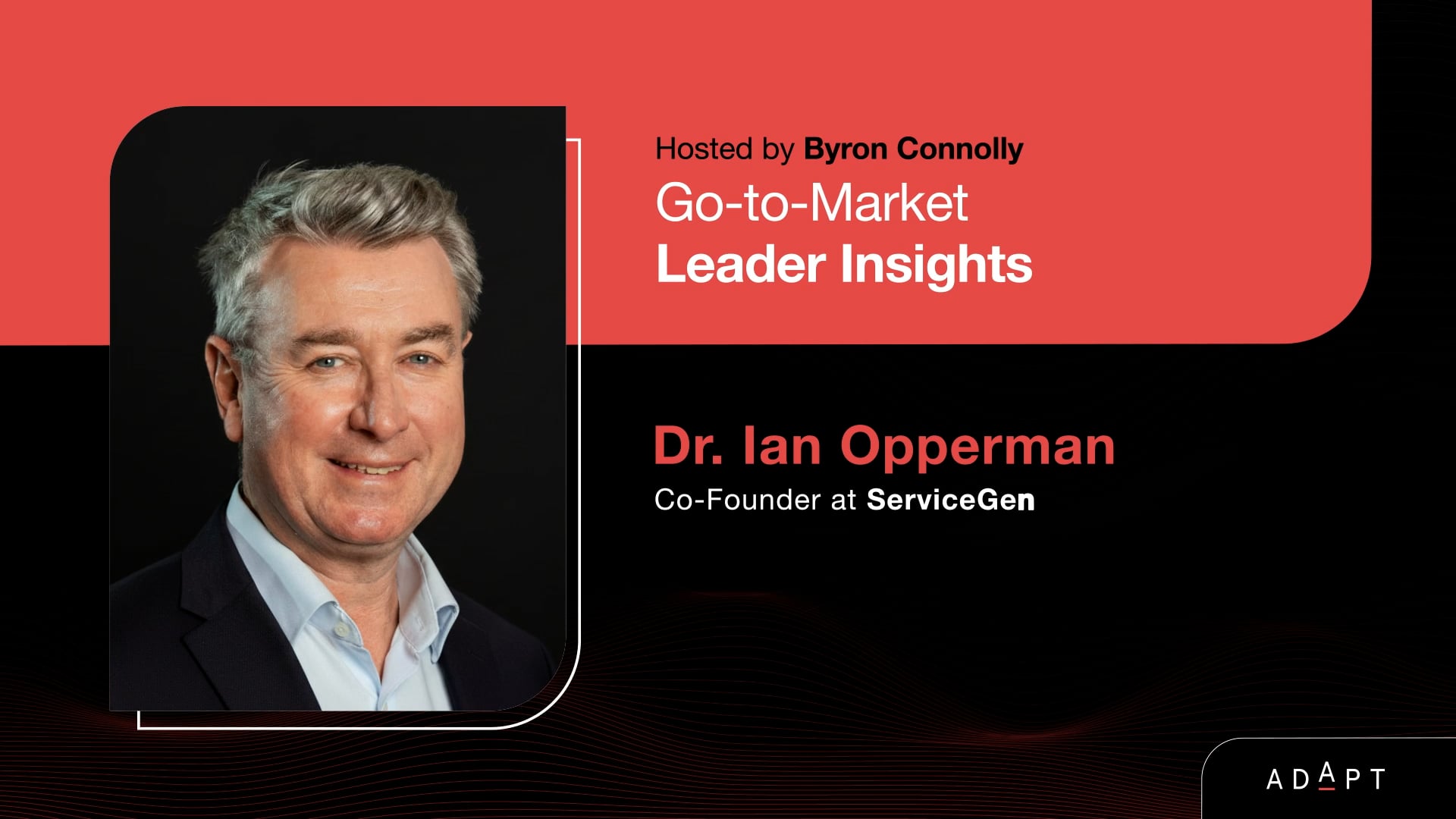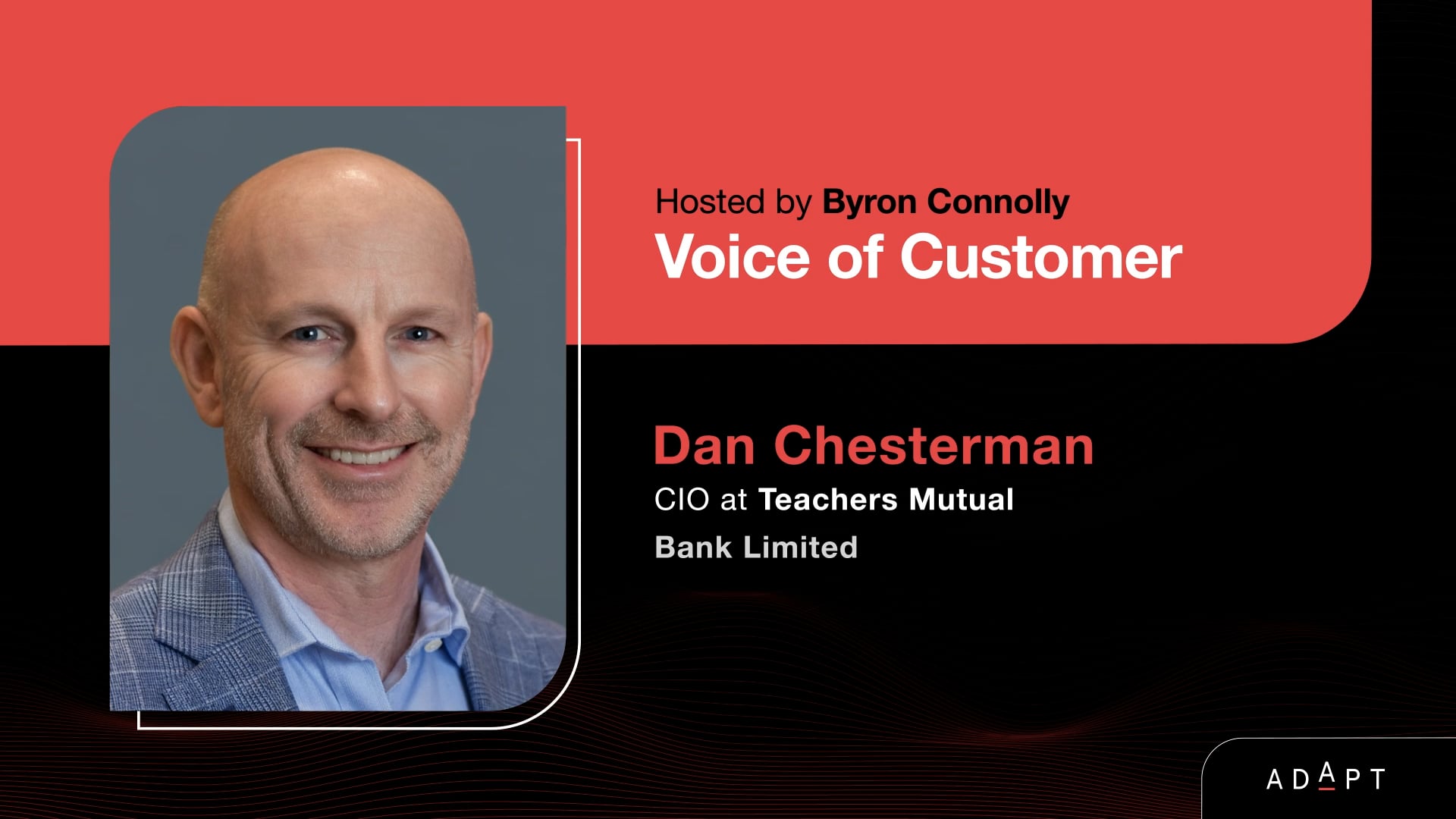How Charter Hall is Powering Safe Returns to a Hybrid Workplace
Sheridan Ware explains how it took not only organisation-wide collaboration but cross-industry collaboration to innovate and why eliminating repetitive tasks for employees creates more meaningful, value-adding work.As COVID restrictions began to ease at the beginning of 2021, CTO, Sheridan Ware, shared how Charter Hall is assisting with safe returns to work.
Technology is assisting greatly for the persisting hybrid workforce, with thermal scanning, contactless entry, UV cleaning, and spatial sensor data enabling teams to collaborate and serve customers with complete health and compliance front of mind.
Sheridan explained to ADAPT’s Senior Research Strategist, Aparna Sundararajan, during ADAPT’s CIO Edge how this took not only organisation-wide collaboration but cross-industry collaboration to innovate.
She discusses organisational goals of not only creating conditions for flexible working but eliminating repetitive tasks for employees to do more meaningful, value-adding work.
Aparna Sundararajan:
Welcome, Sheridan, to ADAPT 2021 CIO Edge.
Sheridan Ware:
Thanks for having me.
Aparna Sundararajan:
Interestingly, the conversation that we were having just right now about what are the biggest things that came out for you and your organisation in 2020 and what are your biggest priorities going to be in 2021?
I just wanted to ask a few questions about your plans and focus and what you’re looking at achieving. Let’s begin. If I must ask you about the most important project or the most important initiative for 2021 for your organisation, what will be?
Sheridan Ware:
It’ll be several things, but a lot of them will continue to be driven by COVID. Right now, we’re very focused, as several of our tenants are, on how we can do our part as a landlord in helping people come back safely into our buildings because obviously, we haven’t got the vaccine in place now.
People are still concerned about physical safety, and so we’ve been looking at a range of different options, including technology options for how we can make sure that we’re keeping our environment safe.
That’s everything from thermal scanning when people enter the building, opening our end-of-trip facilities so people can bike or walk into work rather than having to catch public transport.”
We’ve been looking at contactless entry and making our amenities like toilets as contactless as possible to reduce the likelihood of transmission through touch.
Then we’ve even looked at UV cleaning, automatic UV cleaning of surfaces that are high touch so that we can try to make the environment as safe as possible.
So that’s for us as a landlord, but we’re also looking at that for us as a tenant because as we’ve returned into our office environments, we’ve had the problem of, “Hey, we don’t have enough space because of all the social distancing requirements.”
We’re looking at using IoT and sensor data to make sure that we’re getting the maximum utilisation of space. We can try to nudge people’s behaviours around social distancing as well because we must keep one and a half metres away from each other.”
That’s keeping us all very busy now. We’re very much of the view that there’s no silver bullet. We’ve got to look at multiple different options in both the technology and the non-technology space to ensure that our offices are safe, but it is nice to return to the office.
There are things like collaboration, connection, coaching, all of those just colliding with people and having water-cooler moments. They’re so hard to produce in a remote environment, and so we’re trying to get that balance right of how we’re going to use our office.

Aparna Sundararajan:
That’s very interesting because this is almost like what we’ve been talking about in future of work, that there must be flexibility provided to the employees.
If someone wants to come back to work, it’s our job to make sure that it’s a safe environment and you’re doing it with technology being pivotal to it. May I ask who the stakeholders are within this project?
I’m sure it was strategically driven by IT, but who are you working with?
Sheridan Ware:
We are just one part of the puzzle.
We’ve been working with our people team, our risk and compliance team, our concierge team, or our facilities team from the get-go.”
We’re working with our customers to understand their needs, so it’s a good point, though.
It’s a team sport. You can’t do any of this in a vacuum, and so it’s been fun to be constantly working within that wider group, understanding what all the options are as we try to carve out, not just a new normal but better normal than the one that we had before.
Aparna Sundararajan:
Is there a road map of how much time this is going to take?
Sheridan Ware:
We’re pretty good on the wellness side now. There are five areas that we’re working through now. One is wellness, which we’ve just talked about, choice and flexibility.
As you just said, how do you provide flexibility and give people that choice of where they’re going to work and for what activities?
We’re always focused on ease and making that experience as easy as possible for our people. Our connection to our culture and each other and our customers.
Then the final bit, the bit that I’m excited about as we move forward, is meaning.
How do we get out the mundane work out of people’s lives so they can do the meaningful, impactful work that aligns with their passions and their purposes?”
It’s going to be amazing watching how data and automation, and artificial intelligence play into that reality of empowering our people to question, as they did during COVID, what is the best use of my time and can the technology department help in getting rid of some of that stuff, which frankly is just not the best use of people’s time?
We’re excited to be starting to think through that journey as well.

Aparna Sundararajan:
I’d be very keen to understand how that went. Are there key learnings that you took from last year that you’re applying now?
Sheridan Ware:
The first one you’ve already referred to is it’s not an individual sport. It is a team sport. You’ve got to be bringing everybody along on that journey and working to integrate technology into the wider solution.
I would say it’s not just a team sport for us within Charter Hall. It’s a team sport in the wider ecosystem as well. We’ve leveraged very heavily on our technology partners, on our facility services partners.”
I would love to see us working more closely with the state government, for example, on the public transport elements and the commute piece. There’s a role for academia to play.
It is a real team sport, and we’ve all got to collaborate. And then for us focusing on reuse. We found that when we started just to prototype solutions, there was so much stuff we already had that we could reuse in a slightly different way.
Now, we’re trying to see whether, for example, Microsoft, we have these Teams rooms like a lot of people, which have cameras that can do facial recognition and detect how many people are in a room.
If we can cross-compare that with the data around how many people, what the capacity of that room is, maybe we can nudge behaviours around social distancing.
So, we are looking at reuse and how do we buy the latest COVID gadget but think about well how we will use this in the future and how can it be part of our long-term normal as we transition?
Aparna Sundararajan:
That’s a huge lesson on having simple innovations, which are high impact and reusability that helps into operational excellence and optimising costs.

Sheridan Ware:
I think that test and learn. We knew when we were going into this that we didn’t have all the answers.
We had lots of questions but not a lot of answers, so we just decided we’ll start, act, learn as we go, learn from the failures.
Rather than calling them failures, they’re learnings.”
By doing that and taking any fear out of that equation, we’ve been able to get through a whole lot in a very short period with an incredibly engaged team. They’re so excited to be focusing on such important and impactful work for our tenants.
Aparna Sundararajan:
That’s amazing. I’m going to remember learning rather than failures.
Sheridan Ware:
We don’t say it fails fast. We say you win; you learn. Failure is not acceptable because failure would say you failed to learn.
If you keep making the same mistake repeatedly and failing to learn, that is a failure, but it’s win or learn.
Aparna Sundararajan:
That makes a lot of sense. Failure is when you fail to learn. Thank you. On that note, thank you so much, Sheridan, for talking.






























